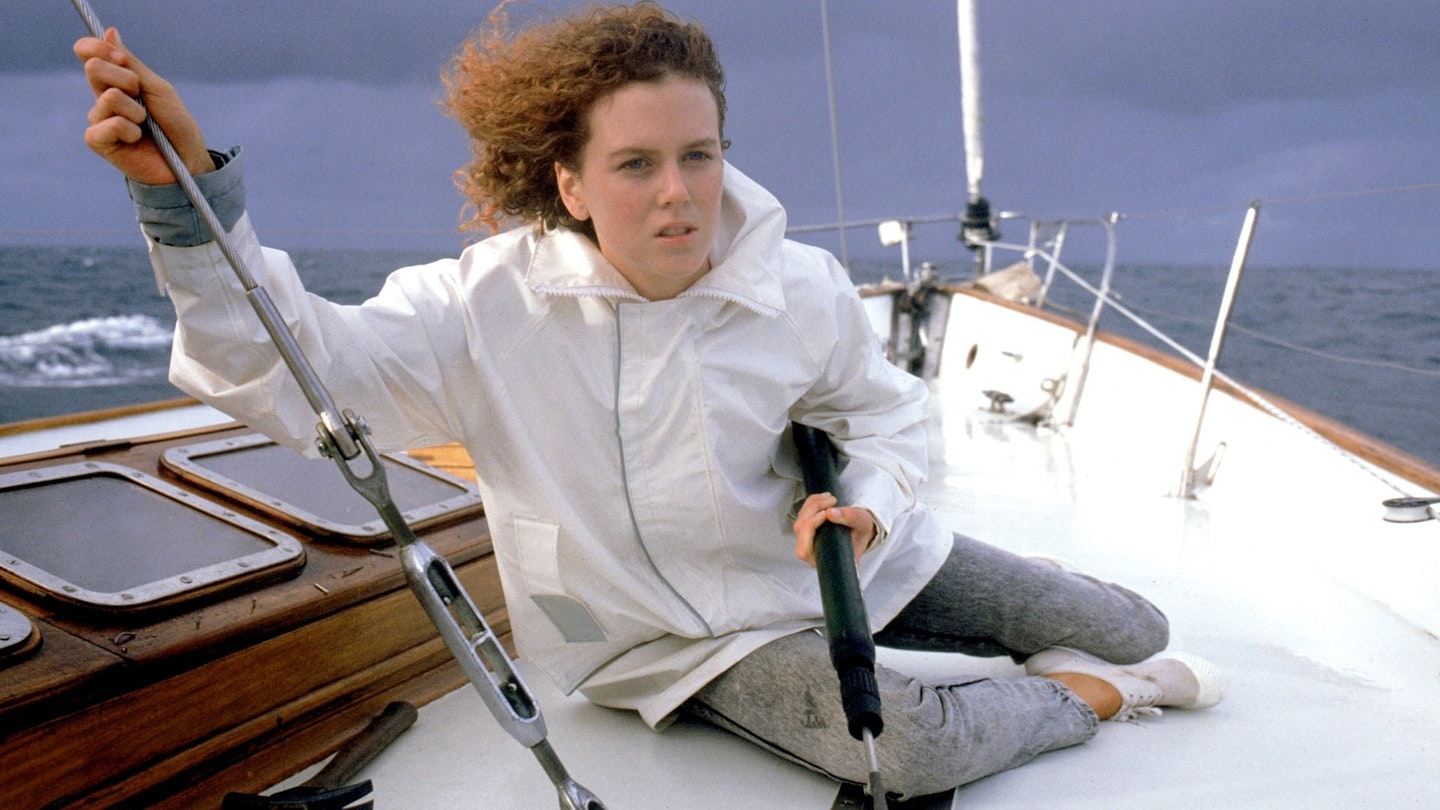Orson Welles originally bought the rights to Dead Calm (from a novel by thriller writer Charles Williams) in the mid-60s, only for it to become one of his many unfinished projects (although according to co-star Jeanne Moreau, it was completed and remains unseen under Welles’ orders). It is intriguing to imagine the results: Welles had one of the boldest, most recognisable of stylistic touches, whereas Phillip Noyce’s interpretation is defined only by the glossy competence of the advertising agency.
Australian navy officer John Ingram is on a yachting trip with his young wife Rae to recover from the death of their child. They pick up Hughie, a distraught survivor from a nearby vessel whose other crew members, he says, have died of food poisoning. Reluctant to believe this story, Ingram rows out to the schooner where he finds evidence to confirm his suspicions. Hurrying back to his wife and his yacht, he sees it departing, Hughie at the helm and an unsuspecting Rae at his mercy. Ingram then gives chase: the strong, competent man of the sea battling with the element he has mastered for 25 years, and slowly losing control.
Initially, the film works well as a tense, teasing suspense vehicle displaying, for instance, none of the cinema’s customary sentimentality in its dealings with animals and children: in the opening minutes, the couple’s baby is catapulted head-first through a windscreen and later a small dog is impaled on a harpoon. But one of Dead Calm’s major problems is that it brings to mind ideas and plot similarities from so many other films that you are constantly being reminded of its own rather humble status.
Even more of a problem, though, is the film’s ever-more desperate search for shocks, capped by the type of absurd “false ending” that was tagged on to every horror fiIm released in the five years after Carrie and which was reprised by the likes of Fatal Attraction.
